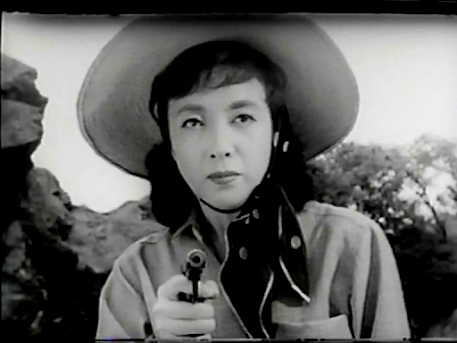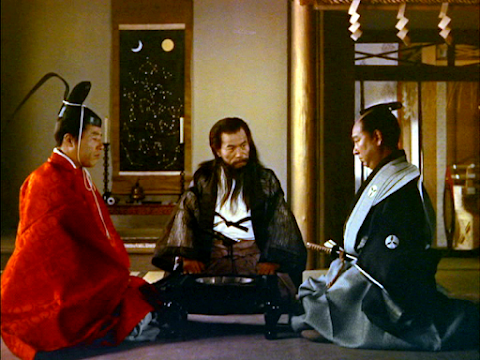Obscure Japanese Film #89
Based on a 1929 novel of the same title (yet to be translated into English) by Edogawa Ranpo, this low-budget thriller stars Susumu Fujita in the role of Ranpo’s regular detective character, Kogoro Akechi. Fujita – best-known for playing the title role in Akira Kurosawa’s debut feature Sanshiro Sugata (1943) – first appears around 30 minutes in when Akechi is called in to investigate a gruesome murder. A young woman has been abducted and killed while attending a job interview, after which her dismembered body was found concealed inside a number of body sculptures. Akechi is soon on the trail of mad master criminal Dr. Kuroyanagi (Joji Oka), who gets his kicks out of murdering young women resembling the wife who betrayed him. He next sets his sights on movie star Yoko (Chikako Miyagi). However, using a series of increasingly bizarre disguises culminating in an outsize Cyrano de Bergerac nose, he continually eludes capture. His fiendish schemes reach their strange climax when he abducts a whole busload of young beauties and forces them to be models in a tableau of hell he presents before a live audience.
The Spider Man was originally released in two parts – the first entitled Satsujinki Kumo-otoko (literally ‘Murderer Spider Man’) running 97 minutes, the second Kumo-otoko no gyakushu (‘Spider-Man’s Counterattack’), which I haven’t been able to find a running time for. The version I saw displayed the title of part 1 in the opening credits, but was actually a re-edit of both parts combined. It appears that each part was edited down to around 55 minutes and simply spliced together, making a total running time of 109 minutes. The print was a fairly low-res VHS transfer which is watchable but far from ideal.
The picture was directed by one Hiroyuki Yamamoto (1908-?), a name that could hardly be any more obscure. Oddly, it was his first film since 1943 and was also to be his last, perhaps because the production company (Shin Eiga) folded shortly after this was released. He first directed in 1937, and it appears that the majority of his 11 previous films were military propaganda works.
The Spider Man is quite fast-paced, entertaining hokum which was evidently shot quickly and cheaply. For this reason, it never fully realises its potential and fails to make the most of its hell-tableau climax, which could have been far more memorable with a little extra care. Overall, the film is a fairly tame affair despite the potential nastiness of the story, and it’s perhaps just as well that it remains the only version of this particular Ranpo novel given how explicit a treatment it might have been given in more recent years.
Susumu Fujita had played Akechi before in a 1948 film, Issunboshi (now lost), but mostly phones it in here. Much better value is Joji Oka, who attacks his role with a gusto appropriately reminiscent of Lionel Atwill. Intriguingly, Oka had played Ranpo’s detective himself in a 1950 film entitled Tsurara no bijo, which received a limited Japanese DVD release in 2016 courtesy of collectors’ magazine publisher DeAgostini.
Watched without subtitles.
















